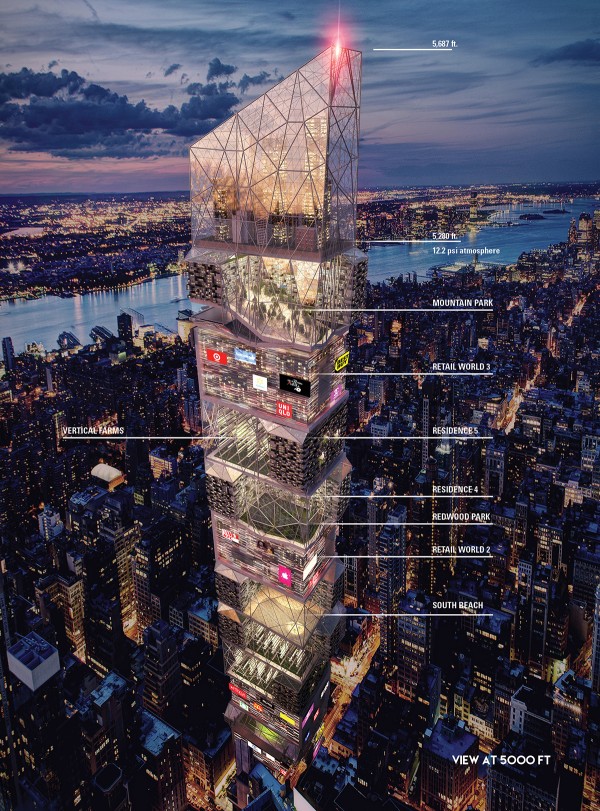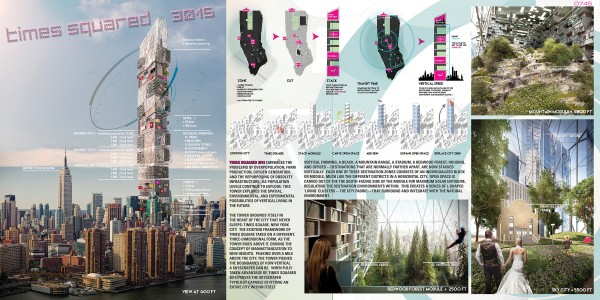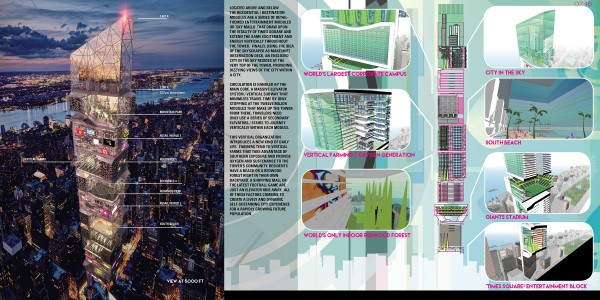Honorable Mention
2015 Skyscraper Competition
Blake Freitas, Grace Chen, Alexi Kararavokiris
United States
As our planet continues to overpopulate, Times Squared 3015 is an opportunity to explore the spatial, environmental, and experimental possibilities of vertical living. This tower embraces the problems of overpopulation, farm production, oxygen generation, and the re-purposing of obsolete infrastructure.
The tower grounds itself in the heart of the city that never sleeps: Times Square, New York City. The existing framework of Times Square take on a different, three-dimensional form, as the tower rises above it, driving the concept of Manhattanization to new heights. Peaking over a mile above the city, the tower pushes the boundaries of how vertical a skyscraper can be. When fully taken advantage of, Times Squared 3015 proves the skyscraper typology capable of fitting an entire city within itself.
Vertical farming, beach, mountain range, stadium, redwood forest, housing, and offices–destinations that are normally farther apart, are now stacked vertically. Each one of these destination zones consists of an individualized block or module, much like ¬ the different districts in a horizontal city. Open space is carved out of the south-facing side of the module for maximum solar exposure, regulating the destination environments within. This creates a series of L-shaped ‘living’ clusters — the city fab¬ric — that surround and integrate with the natural environment.
Located above and below the residential/destination modules are a series of retail-themed entertainment modules or ‘sky malls’ that draw upon the vitality of Times Square and extend the same excitement and energy vertically throughout the tower. Finally, using the idea of the skyscraper as makeshift observation deck, an enclosed city in the sky resides at the very top of the tower, providing dizzying views of the city within a city.
Circulation is handled by the main core, a massive elevator system/vertical subway that minimizes travel time by only stopping at the twelve major modules that make up the tower. From there, travelers need only use a series of secondary elevators / stairs to journey vertically within each module.
This vertical organization introduces a new kind of daily life. Farmers tend to vertical farms that take advantage of southern exposure and provide oxygen and sustenance to the tower’s community. Residents have a beach or a redwood forest right in their own backyard. A shopping mall or the latest football game are just an elevator ride away. All of these factors combine to create a lively and dynamic self-sustaining city experience for a rapidly growing future population.

















